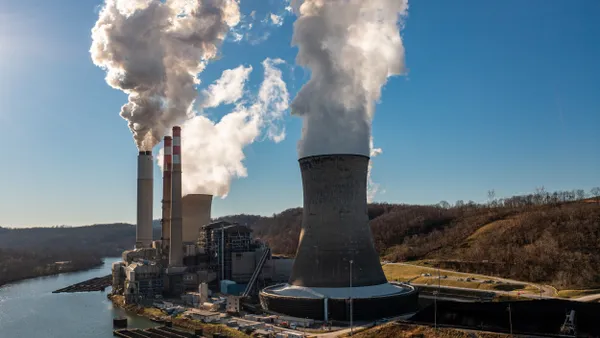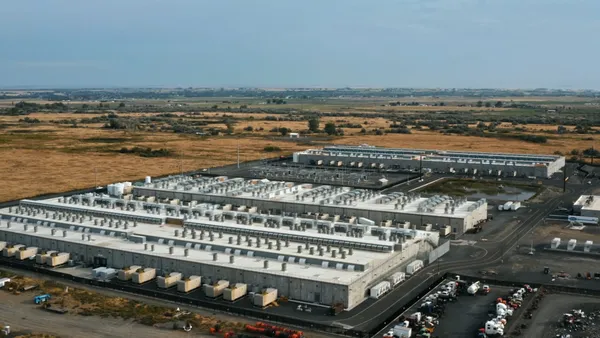Dive Brief:
- Southern California Gas Company (SoCalGas), the nation's largest gas distribution utility, is clashing with environmental advocates over its role in administering the state's Self-Generation Incentive Program (SGIP), which recently got a $45 million budget allocation for heat pump water heaters (HPWHs) which can help manage system load and serve other uses.
-
"SoCalGas has a long history of working to undermine measures that would lead to increased deployment of HPWHs," attorneys for Sierra Club and the Natural Resources Defense Council said in comments filed with the California Public Utilities Commission (CPUC) earlier this month.
-
SoCalGas on Monday filed a motion asking the commission to strike portions of the groups' comments, pushing back on their accusations and contending that they are presenting "irrelevant and inflammatory information into this proceeding."
Dive Insight:
"The commission has to ask, are you putting the fox in charge of the henhouse here, when [SoCalGas is] actually in charge of implementation of a heat pump water heating incentive program" Matthew Vespa, staff attorney with Earthjustice, who is representing Sierra Club in the proceeding, told Utility Dive.
The utility, however, maintained in its motion that it isn’t challenging the eligibility of HPWHs in the program, and said the groups were trying to “chill or prohibit SoCalGas’s speech that is protected under the First Amendment.”
California's SGIP incentivizes the deployment of distributed energy resources, and since 2001 has provided more than $1.2 billion to deploy over 750 MW of generation. Pacific Gas & Electric, Southern California Edison, SoCalGas and the Center for Sustainable Energy are responsible for administering the program.
In recent years, the CPUC has made a series of changes to the program's structure, including creating a $100 million budget specifically to deploy storage systems in areas that are prone to wildfire-related power shut-offs. In addition, the agency has created a $45 million incentive budget for HPWHs over a five-year period, noting that they could shift load from peak to off-peak periods, and provide the California Independent System Operator with ramping services.
"HPWHs are really going to be the technology that we transition to if we meet any of [California's climate goals]," Panama Bartholomy, director of the Building Decarbonization Coalition, told Utility Dive.
However, the technology currently has very low levels of deployment in California, while gas heaters retain most of the market share, he said.
The $45 million budget allocation "does not buy a lot of heat pump water heaters — but it's the right kind of direction we need to go in," Bartholomy said.
In May, the CPUC opened a rulemaking to take a closer look at the SGIP structure, including how HPWH technologies would fit into it. As part of that rulemaking, SoCalGas urged the commission in comments filed at the end of June to clarify what greenhouse gas emission requirements HPWHs would have to meet as part of the program, stating that "there has been no verification of a HPWH's ability as an energy storage technology to shift peak demand and provide GHG emission benefits when compared to the electric grid — the measurement applicable to all technologies participating in SGIP."
The environmental groups, however, raised concerns in their response that the utility is trying to "undermine" the inclusion of HPWH technology in the program.
"The question before the commission is should they have a role in implementing the program… for a technology they have repeatedly sought to undermine because it impacts their business," he added.
As part of their arguments, the groups cited internal SoCalGas communications dating back to 2014, saying they show the utility campaigned against proposed changes to water heating efficiency standards, including an email that identified them as "a significant threat" to the utility's residential new construction load. The documents were obtained through a discovery process by the CPUC's Public Advocates Office in a separate proceeding, according to Vespa. The Public Advocates Office is conducting a broader investigation into whether SoCalGas used ratepayer funds for pro-gas advocacy, the LA Times reported last week.
In its subsequent motion to strike, SoCalGas said the groups' comments were "effectively a collateral attack on the legitimate issues SoCalGas has raised," like asking the commission to clarify how HPWHs will be treated as part of the incentive program.
An attorney for SoCalGas also pushed back on the accusations at a CPUC pre-hearing conference Wednesday, and said the utility does not oppose the eligibility of HPWHs in the program.
"SoCalGas has been a prudent SGIP program operator with a proven track record since the program's inception," Edward Hsu, an attorney for the company, told regulators.
"SoCalGas intends to continue this approach in its administration of the SGIP program, including in developing rules for HPWH," he added.
In response to a request for comment, SoCalGas referred back to the motion it filed with the CPUC this week.
Losing a market share in water heating could open up the possibility of big reductions in gas demand, James Caldwell, technical director with the Center For Energy Efficiency And Renewable Technologies, also a party in the proceeding, told Utility Dive.
"The anchor for residential gas demand is really water heating — that load for the gas company is very profitable," he said, adding that if a dwelling has a gas water heater, it's easier to then install other kinds of gas-fueled appliances like stoves and fireplaces. "It's the anchor use that underlies a lot of the economics going forward and unless you get rid of that, then you have a really hard time reducing gas demand and meeting your greenhouse gas targets," he added.















